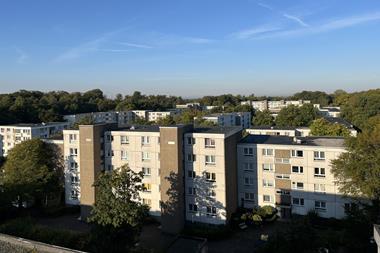GLOBAL - A crisis forecasting model developed for banking regulators has included property prices as a key risk factor for the first time.
Economists at the National Institute for Economic and Social Research (NIESR) in London added property prices to capital and liquidity standards to develop a reverse probability model for crisis prediction.
Presenting the findings this week, Professor Ray Barrell said: "Crises are not inevitable but they are connected to house price booms. If you're having a house price boom you should already have done something about it."
However, he pointed out that no usable data on commercial property are available because the Bank of International Settlements (BIS), the international payments regulator, "won't release them - it's considered to be secret data." The model therefore relies on residential data.
Annual residential data would be sufficient for the model to work," said Barrell. "You don't need data on a real-time basis."
The problem, he said, was not that the model couldn't be constructed but that policymakers had failed in the past to react to obvious indicators of exuberance.
"The effects will obvious to anyone looking at the data. I can't imagine why the Bank of England, the UK or the US thought that nothing was wrong when they looked at house prices," he told IPE Real Estate.
He suggested that ‘exuberant' house prices in the UK should have triggered a policy response involving the loan-to-value ratios of home loans, and the US should have regulated in a way so as not to allow sub-prime lending.
Charles Goodhart, a former member of the Bank of England's Monetary Policy Committee and now a professor at the London School of Economics, pointed out that there had been few public calls for tighter regulation during the period of exuberance.
"Borrowers, lenders, politicians and the press loved it. What you would be asking policymakers to do is take away the punchbowl just as the party got going," he said.












